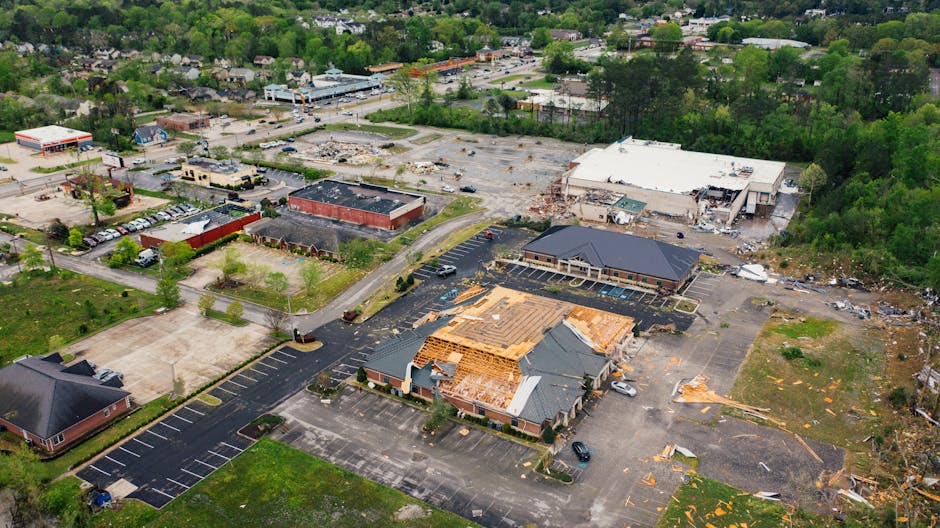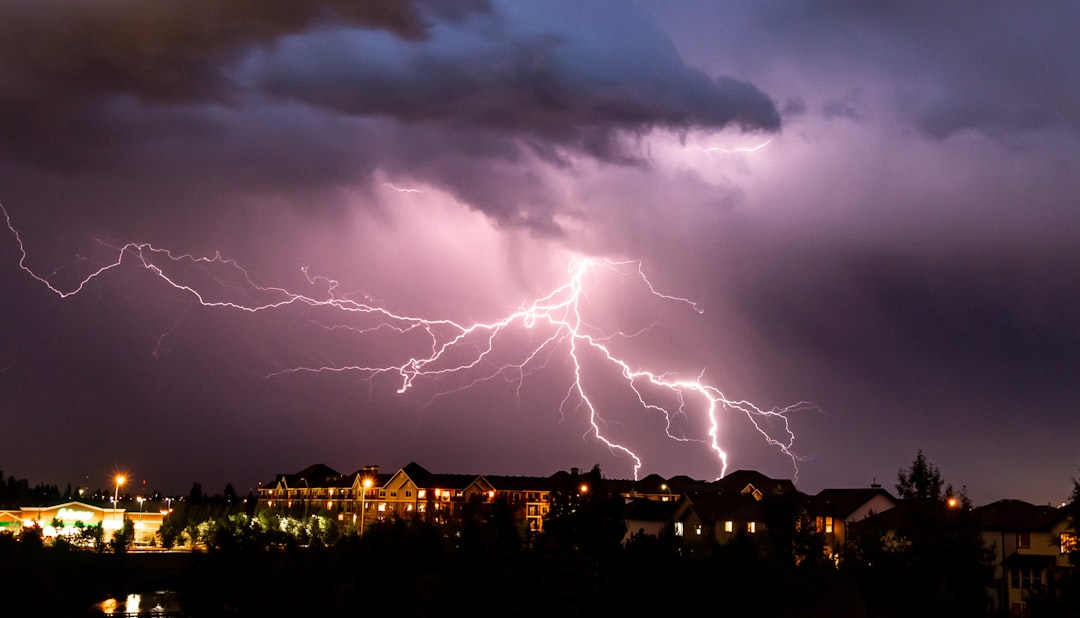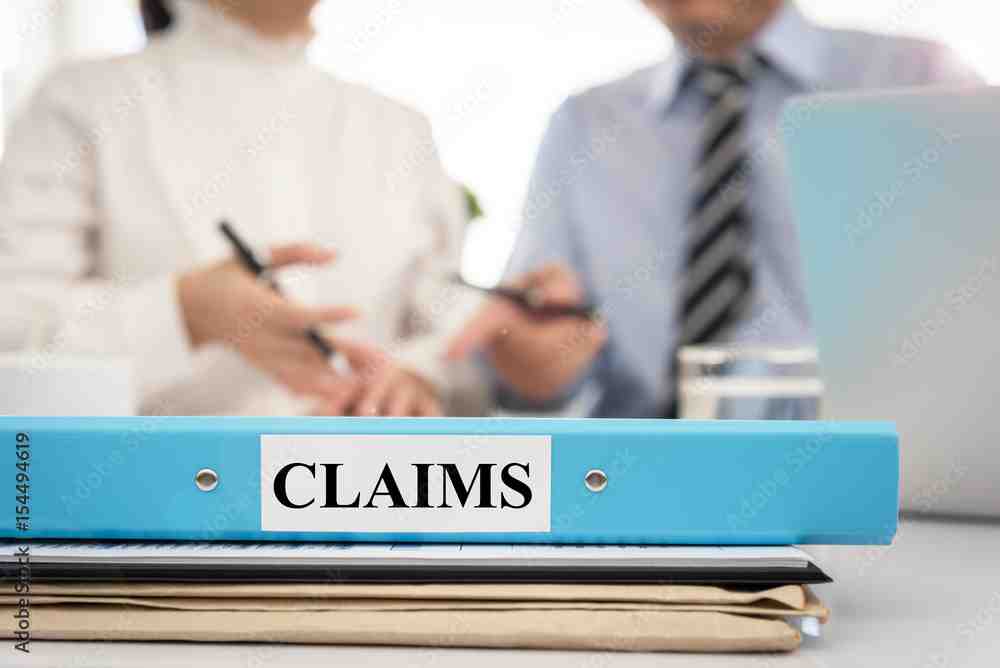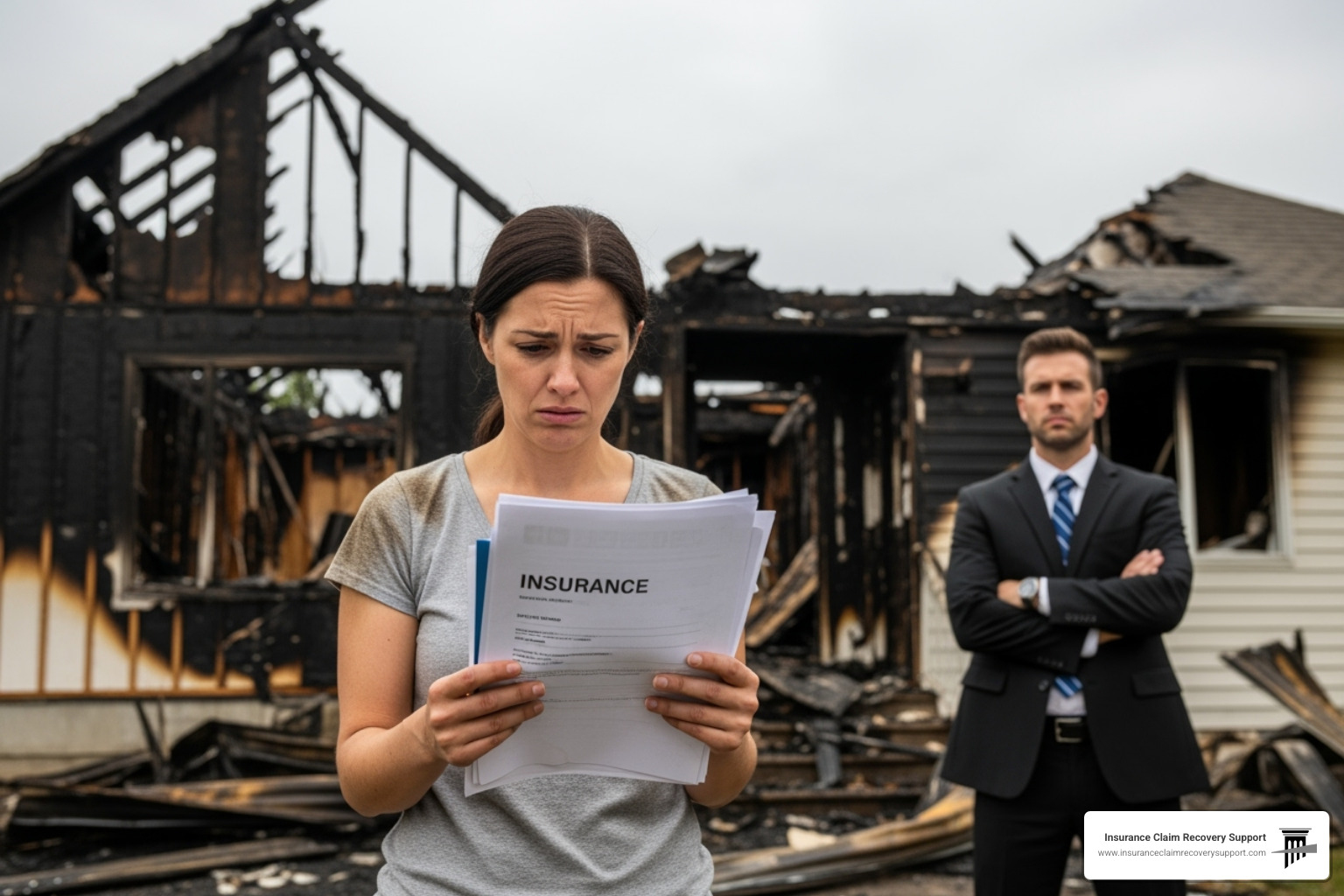Large loss claims handling is critical for property owners who face substantial damage to their assets. Whether you manage a multifamily complex or own a commercial building, dealing with property damage from events like fires, hurricanes, or floods can be daunting. In these challenging times, understanding your insurance coverage and ensuring thorough documentation is key to securing a fair and swift settlement. Here are a few essentials you shouldn’t overlook:
- Comprehend Your Policy: Know what is covered and the exclusions.
- Document Everything: Maintain detailed records and photos of damage.
- Consult Public Adjusters: They can help negotiate and maximize your claim.
- Stay Informed: Timely knowledge about the claims process prevents delays and misunderstandings.
Large loss claims handling can significantly impact business continuity and recovery. I’m Scott Friedson, a multi-state licensed public adjuster with a track record of settling over 500 large loss claims valued at over $250 million. My expertise in large loss claims handling can help you steer the complex terrain of insurance policies to ensure you receive the compensation you deserve.
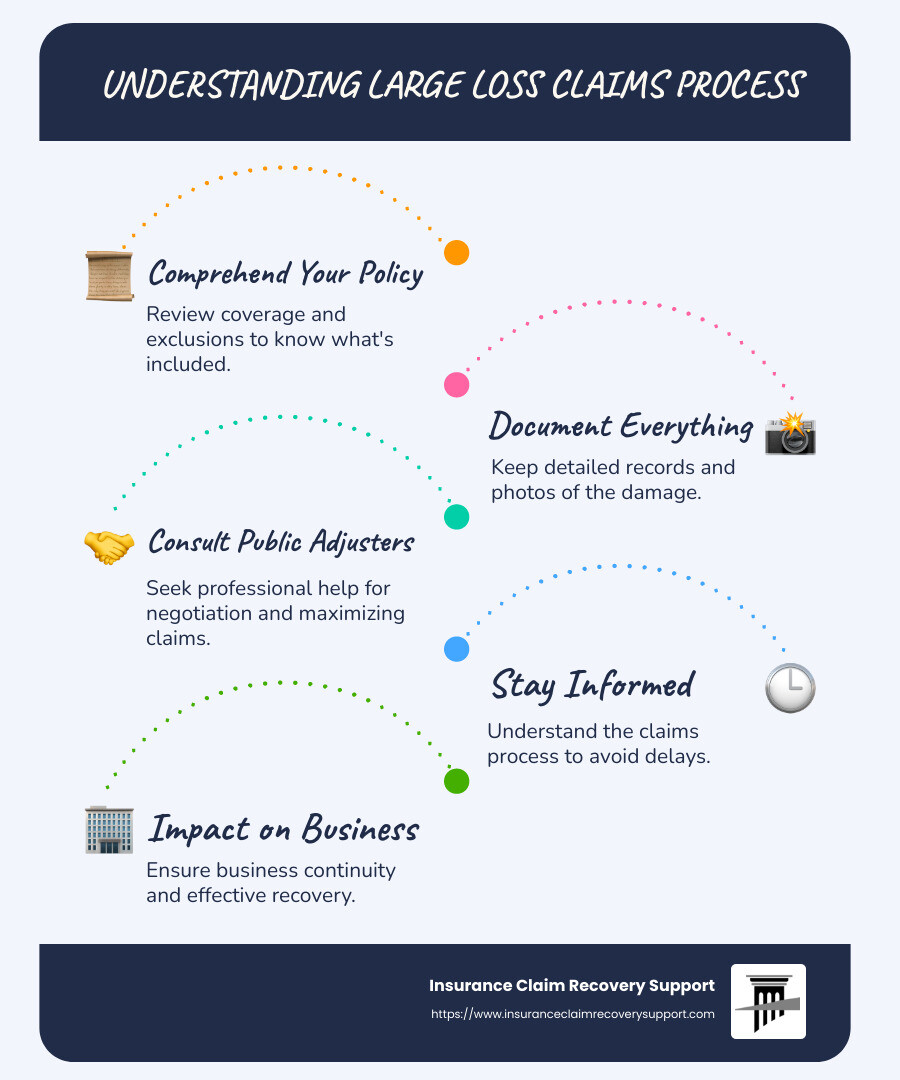
Terms related to large loss claims handling:
– commercial large loss claim
– large loss claim documentation lists
– large loss claims conference
Understanding Large Loss Claims
When you hear the term large loss claims, it refers to insurance claims that deal with significant property damage. These claims often involve damages exceeding $200,000 and can arise from various catastrophic events, such as natural disasters and fires. Let’s break down what this means and why it’s crucial for property owners.
Definition and Causes
Large loss claims are claims for substantial damage to properties like commercial buildings, multifamily complexes, or historic structures. They aren’t just about the dollar amount but also about the overall impact on the property and business operations. Common causes include:
- Natural Disasters: Hurricanes, tornadoes, and floods are major culprits. For instance, Hurricane Harvey and the 2021 Texas ice storms caused widespread havoc, leading to numerous large loss claims.
- Fires: A fire can lead to extensive damage, not just from flames but also from smoke and water used to extinguish it. The complexity and variety of damages make fires a significant source of large loss claims.
Impact on Property Owners
Facing a large loss can be overwhelming. The damage may halt business operations, leading to revenue loss and additional costs for repairs. For example, a storm might initially seem to have only damaged your garage, but further inspection could reveal extensive issues requiring rewiring of the entire home to meet current building codes.
Understanding the full scope of damage is crucial. This is where public adjusters come into play. They work on behalf of policyholders to assess damages accurately and ensure fair compensation. Their expertise is invaluable in navigating the complexities of large loss claims handling.
Insurance Coverage
Knowing what’s covered under your insurance policy is vital. Standard policies might cover fire, wind, and hail damage but often exclude floods or earthquakes. For instance, flood damage requires separate flood insurance. Determining the root cause of the damage is essential to make sure your claim is processed correctly.
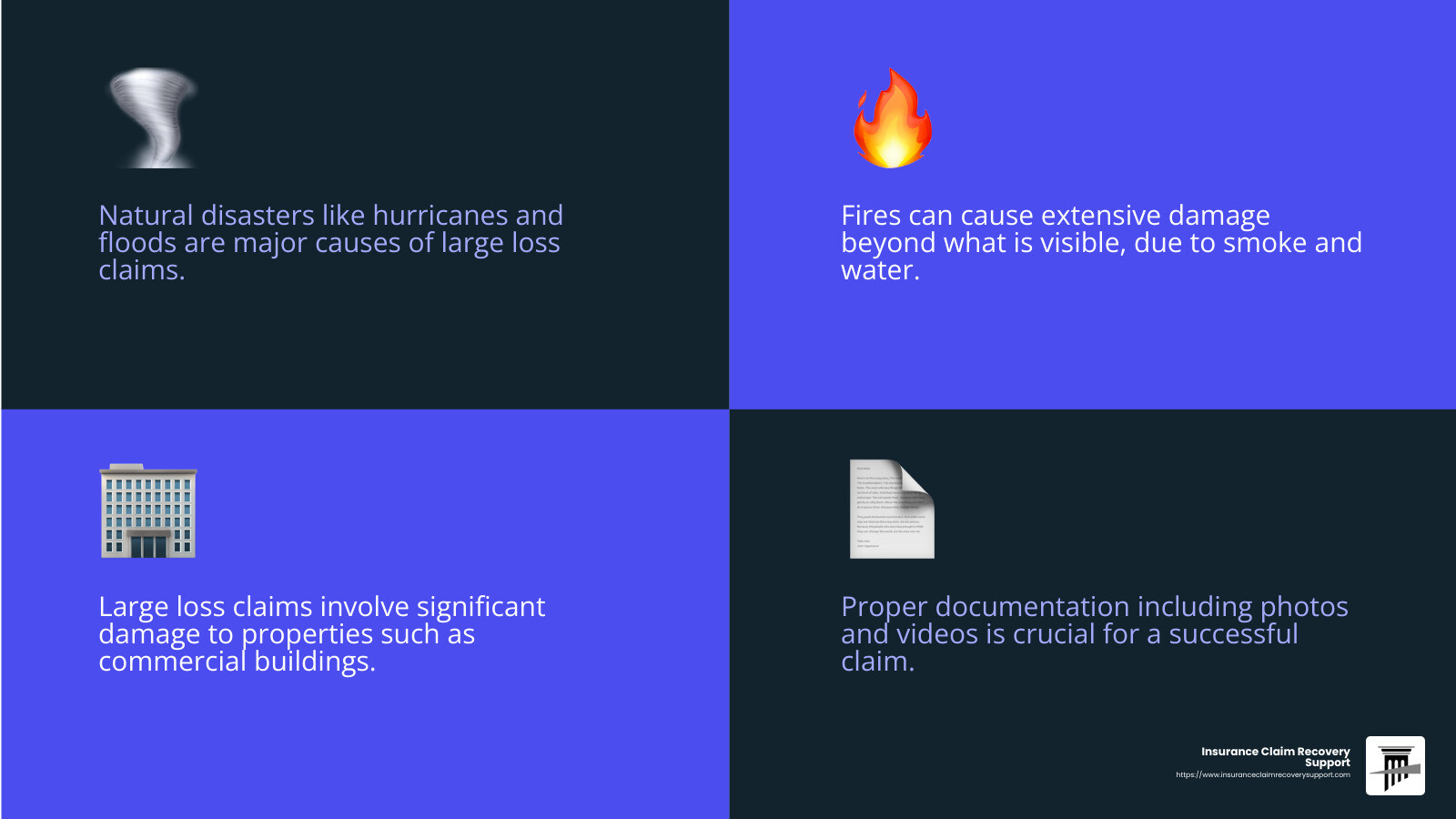
Documentation and Evaluation
Proper documentation is key to a successful claim. This includes:
- Photographs and Videos: Capture all visible damage.
- Detailed Reports: Keep records of all communications and assessments.
- Professional Evaluations: Engage experts to evaluate structural or electrical damages as needed.
Thorough documentation supports your claim and aids in negotiations with insurance companies.
In summary, understanding large loss claims involves recognizing the significant impact of property damage, knowing your insurance coverage, and effectively documenting and evaluating the damage. With the right preparation and support, property owners can steer these challenging situations successfully.
Next, we’ll explore the detailed process of navigating these claims and how to ensure a fair settlement.
Navigating the Claims Process
When you’re faced with a large loss claim, navigating the claims process can be daunting. But with the right approach, you can handle it smoothly. Let’s break down the key elements: claims handling, documentation, evaluation, negotiation, and the role of public adjusters.
Claims Handling
The first step is understanding the claims process. This involves submitting your claim to the insurance company and ensuring all necessary documents are in order. Claims handling requires attention to detail and adherence to deadlines.
- Submit Promptly: File your claim as soon as possible after the loss occurs.
- Know Your Deadlines: Be aware of the time limits for submitting evidence and other required documents.
Documentation
Documentation is the backbone of any successful claim. Without it, proving the extent of your loss can be challenging.
- Photographs and Videos: Take clear, detailed images of the damage from multiple angles.
- Inventory Lists: Document all damaged items, including their condition before the loss.
- Receipts and Estimates: Keep receipts for any immediate repairs or replacements, and obtain repair estimates.
Thorough documentation strengthens your claim and can speed up the process.
Evaluation
After documenting everything, it’s time for evaluation. This step involves assessing the extent of the damage and estimating the cost of repairs.
- Hire Experts: Consider hiring professionals like contractors or engineers to provide detailed assessments.
- Understand Policy Terms: Know what your insurance covers to ensure the evaluation aligns with your policy.
Accurate evaluation is crucial for determining the claim’s value.
Negotiation
Once your claim is evaluated, it’s time to negotiate with your insurer. This stage can be challenging, but preparation and clear communication are key.
- Present Your Documentation: Use your evidence to support your claim amount.
- Be Prepared to Counter Offer: Insurers may offer less than expected. Be ready to justify your claim with solid documentation.
The Role of Public Adjusters
Public adjusters play a vital role in large loss claims handling. They work on behalf of policyholders to ensure fair settlements.
- Advocacy: Public adjusters advocate for you, not the insurance company.
- Expertise: They have in-depth knowledge of insurance policies and claims processes.
- Maximized Settlements: With their help, policyholders often receive higher settlements. A study in Florida showed that claims with public adjuster involvement received payments up to 747% higher than those without.
In summary, navigating a large loss claim involves meticulous documentation, thorough evaluation, strategic negotiation, and potentially enlisting a public adjuster. By understanding and managing each step, you can increase your chances of a fair and favorable settlement.
Next, we’ll dig into the role of public adjusters in more detail, exploring how they can help you secure the compensation you deserve.
The Role of Public Adjusters in Large Loss Claims Handling
When faced with a large loss claim, having a public adjuster on your side can make a world of difference. These professionals are your advocates, working tirelessly to ensure you receive the settlement you deserve. But what exactly do they do?
Advocacy
Public adjusters are your personal champions in the insurance world. Unlike company adjusters, who work for the insurer, public adjusters work for you. They represent your interests and fight for a fair settlement. This advocacy ensures that your claim is not just another number in the insurance company’s books.
Expertise
With their deep understanding of insurance policies and claims processes, public adjusters bring valuable expertise to the table. They know how to steer the complexities of large loss claims, from evaluating damages to negotiating settlements. This knowledge is crucial, especially when dealing with intricate claims involving extensive property damage.
Fair Settlement
One of the most significant benefits of hiring a public adjuster is their ability to secure a fair settlement. According to a study in Florida, claims involving public adjusters resulted in payments up to 747% higher than those without their involvement. This statistic highlights the impact a skilled adjuster can have on your claim’s outcome.
Policyholders’ Peace of Mind
Large loss claims can be overwhelming. With a public adjuster handling the intricacies, policyholders can focus on recovery rather than the stress of dealing with insurance companies. This peace of mind is invaluable during challenging times.
In conclusion, public adjusters play a pivotal role in large loss claims handling. Their advocacy, expertise, and commitment to securing a fair settlement make them indispensable allies for policyholders. Next, we’ll explore best practices for successfully managing large loss claims to ensure you get the most out of your insurance policy.
Best Practices for Successful Large Loss Claims Handling
Navigating a large loss claim can be daunting, but following best practices can make the process smoother and more efficient. Here are some key strategies to ensure success:
Comprehensive Documentation
One of the most critical steps in managing a large loss claim is thorough documentation. Start by taking clear, detailed photos and videos of all the damage. This evidence will be crucial when it comes to proving the extent of your loss.
- Photographs and Videos: Capture images from multiple angles to provide a comprehensive view of the damage.
- Professional Assessments: Consider hiring experts like structural engineers or water damage specialists for detailed reports.
- Inventory of Damages: List all damaged items, including their value and purchase date, if possible.
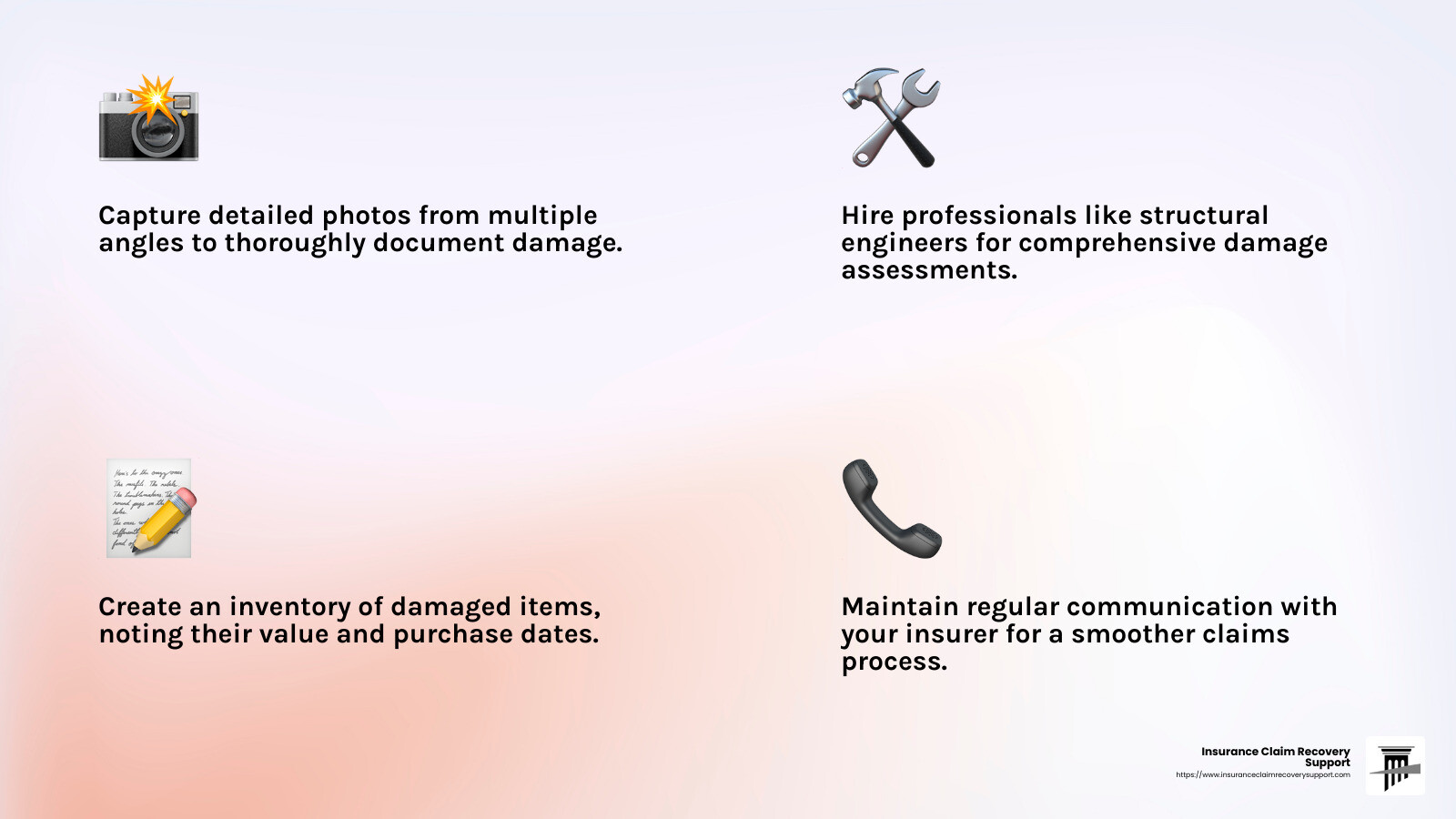
Clear and Consistent Communication
Maintaining open lines of communication with your insurance company is essential. Keep a record of all interactions, noting dates, times, and key points discussed.
- Regular Updates: Provide your insurer with updates as new information becomes available.
- Prompt Responses: Quickly respond to any requests for information to avoid delays in the claims process.
Policy Review
Understanding your insurance policy can prevent misunderstandings and ensure you claim all entitled benefits. Regularly review your policy to know what is covered and any exclusions that might apply.
- Coverage Details: Familiarize yourself with what your policy covers, including any special clauses or exclusions.
- Annual Review: Conduct a yearly policy review to ensure coverage aligns with your current needs.
Expert Consultation
Engaging experts can provide additional support and insight, helping you steer complex claims more effectively.
- Public Adjusters: As mentioned earlier, public adjusters are invaluable in advocating for policyholders. Their expertise can lead to significantly higher settlements.
- Legal and Financial Advisors: Depending on the complexity of your claim, consulting with legal or financial professionals might be beneficial.
These best practices for large loss claims handling can help you manage the process more effectively, ensuring you receive a fair settlement. Next, we’ll address common questions about large loss claims to further explain the process.
Frequently Asked Questions about Large Loss Claims Handling
What are large loss claims?
Large loss claims refer to insurance claims involving significant damage to property. These are typically associated with events like natural disasters—think fires, floods, hurricanes, or tornadoes. The term “large loss” doesn’t just relate to the dollar amount but also considers the impact on the property and the business operations. For instance, a small business could face a large loss if the damage is extensive enough to halt operations and cut off revenue.
How do you handle a loss adjuster?
Handling a loss adjuster effectively is crucial to maximizing your claim. Here’s how to steer this process:
-
Negotiation: Approach the negotiation process with a clear understanding of your claim’s value. Be prepared to discuss and justify the costs of repairs and replacements.
-
Documentation: Present detailed documentation to support your claim. This includes photographs, expert assessments, and an inventory of damaged items. The more evidence you have, the stronger your position will be.
-
Communication: Maintain clear and consistent communication. Keep a record of all interactions with the adjuster, noting dates, times, and the key points discussed. This helps ensure transparency and can be useful if disputes arise.
What is the large loss principle in insurance?
The large loss principle in insurance is all about prioritization. Insurance is designed to protect against big risks—those that could severely impact your financial stability. For insurers, it means focusing on covering substantial, unpredictable losses rather than small, frequent claims. This principle ensures that policyholders receive the necessary support during major incidents, like large loss claims. It’s a critical component of how insurance companies manage risk and allocate resources.
These insights into large loss claims handling can help you better understand the process and your role within it. Next, we’ll explore how Insurance Claim Recovery Support can assist policyholders in maximizing their settlements.
Conclusion
Navigating the complexities of large loss claims handling can be overwhelming. But with the right support, you can secure the compensation you deserve. At Insurance Claim Recovery Support, we are dedicated to representing policyholders, ensuring your interests are front and center.
Our team of experienced public adjusters works tirelessly to maximize your settlement. We understand the ins and outs of Texas insurance laws and have a proven track record of advocating for clients in cities like Austin, Dallas, Houston, and beyond. Our commitment is to guide you through every step, from documentation and negotiation to final settlement.
By partnering with us, you gain access to expert consultation and advocacy that prioritizes your needs. We believe in transparent communication and meticulous documentation to strengthen your claim. Our goal is to alleviate the stress and ensure you receive the maximum settlement possible.
You don’t have to face the challenges of large loss claims alone. Trust Insurance Claim Recovery Support to stand by your side, delivering the support and expertise you need to rebuild and recover.


